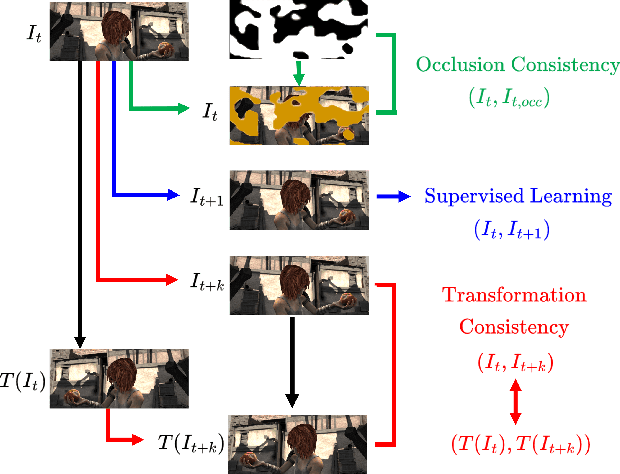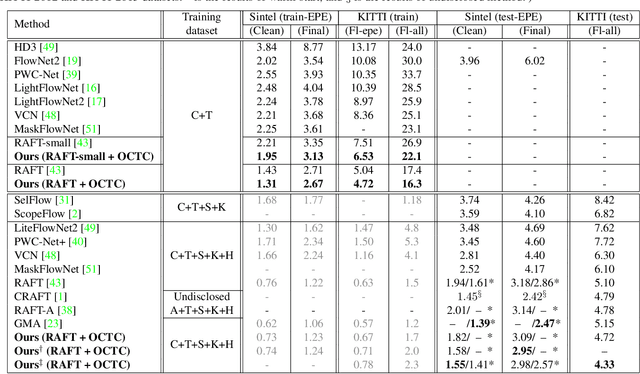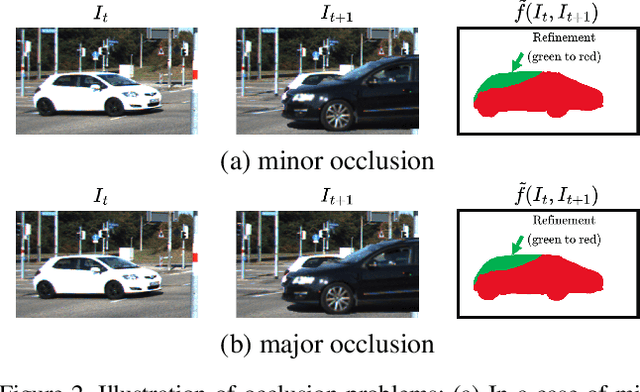Imposing Consistency for Optical Flow Estimation
Paper and Code
Apr 14, 2022



Imposing consistency through proxy tasks has been shown to enhance data-driven learning and enable self-supervision in various tasks. This paper introduces novel and effective consistency strategies for optical flow estimation, a problem where labels from real-world data are very challenging to derive. More specifically, we propose occlusion consistency and zero forcing in the forms of self-supervised learning and transformation consistency in the form of semi-supervised learning. We apply these consistency techniques in a way that the network model learns to describe pixel-level motions better while requiring no additional annotations. We demonstrate that our consistency strategies applied to a strong baseline network model using the original datasets and labels provide further improvements, attaining the state-of-the-art results on the KITTI-2015 scene flow benchmark in the non-stereo category. Our method achieves the best foreground accuracy (4.33% in Fl-all) over both the stereo and non-stereo categories, even though using only monocular image inputs.
 Add to Chrome
Add to Chrome Add to Firefox
Add to Firefox Add to Edge
Add to Edge